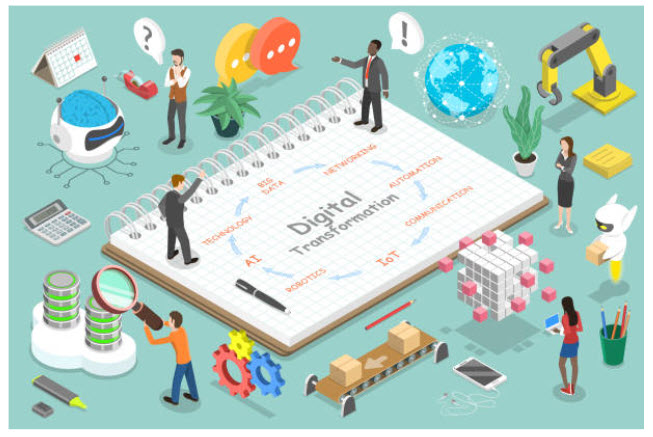What is the current focus of training videos? The advantages of using them and points to consider when creating them

With the rapid increase in the number of companies introducing remote work in recent years, it is becoming more and more common for employee training to be conducted remotely. Among these, e-learning "training videos" are now attracting attention.
With the demand for diversity in work styles, "training videos" that can flexibly meet the needs of companies and participants can achieve their objectives more effectively than traditional training methods.
For HR recruiters of companies that are thinking of reviewing their training methods, please read on as we explain the advantages of introducing "training videos" using e-learning and points to consider when producing them.
What is a training video?

Training videos are used to educate employees by delivering training content in video format. There are two types of training programs in companies: one for new employees to teach the rules and basics of work, and the other for employees to teach the flow of work and how to handle complaints.
When most people think of training, they may think of a situation where participants gather in a conference room or training facility, and the instructor speaks one-sidedly with a microphone in front of them. There are also cases where people gather together online instead of meeting face-to-face in real life. Until now, these types of "group training" have been the norm.
However, in recent years, "training videos" using e-learning, which is more convenient than "group training", has been attracting attention.
Differences from online group training
The main difference between training videos and online group training is that the videos that the participants watch are in real time.
In online group training, multiple people take the course online at the same time using video conferencing systems, etc., and the instructor also provides training to the participants in real time.
Training videos, on the other hand, are created by the company and recorded in advance for the participants to watch. Since the videos are not distributed in real time, participants can watch the videos at their own leisure.
Back to ContentsThree formats of training videos

There are three main types of training video formats: seminar format, manual format, and documentary format.
Which format to use depends on the content of the training, so understand the differences between them and create a video production that is appropriate for the training content your company provides.
Seminar format
Seminar format is a video version of classroom training, where a single trainer speaks to multiple participants, like in a lecture.
There are two ways to film the video: one is to create the video as if the instructor is speaking to the participants, and the other is to film the actual scene of the training with the participants gathered.
Training contents for which seminar-style videos are suitable include training for new employees and etiquette training.
Manual format
The manual format is a video of actual situations in a business manual, such as work procedures, customer service, and store operations. Since participants can see and learn the actual work, they can better visualize and understand the content of the training than with verbal or visual explanations.
It is effective for training content and employee education in companies whose main business is customer service, such as restaurants, beauty and esthetics, and apparel.
documentary style
The documentary format is a video of actual employees at work and employee interviews.
The point is to give the students a better understanding of the corporate atmosphere and the real opinions of the employees. This is effective when you want to convey the company culture and corporate philosophy.
Another point is that it can be made to have a storyline, so the students can watch it without getting bored.
Back to ContentsBenefits of implementing training videos

If you are actually considering implementing training videos, or if you are not having major problems or dissatisfaction with your current training methods, "what benefits will I gain by implementing training videos" is a very important factor to consider.
Here are some of the benefits that companies and participants can gain from implementing training videos rather than offline or online group training.
Can be viewed at any time as long as there is a viewing environment
With conventional group training, participants need to adjust their schedules according to the time the training takes place. With the introduction of video training, participants can watch the video training at their own timing at any time, regardless of time or location, as long as they have a smartphone, PC, tablet, or other device and an Internet connection.
Even if you find some parts of the training content difficult to understand, you can review and revise the points you had difficulty understanding over and over again, which is effective from an educational perspective.
Information is easier to convey than text.
There is a limit to how much you can convey the content of corporate training and employee education through text alone. By introducing training videos and inserting tickers and sound effects in addition to the instructor's explanations, it will be easier for the audience to naturally understand the points and difficult content that the company wants to convey.
Another major advantage is that more information can be accurately conveyed to the students, which can be expected to have a high learning effect.
Since most people today are accustomed to taking in information from videos, it is recommended to intuitively convey the content that the company wants to convey and promote understanding among the participants.
Can be used in a single shot.
With group training, instructors have to set aside time for each training session. With a training video, it is necessary to film once, but after the video is produced, it can be used again and again, thus reducing the burden on the instructor.
If you are inviting outside instructors, you will no longer need to secure instructors or adjust their schedules, which will lead to greater operational efficiency.
Furthermore, since all participants will be watching the same videos, there will be no variation in the teaching methods and ideas of the instructor in charge of the training, and there is no need to worry about differences in the level of education. By maintaining a certain level of quality in the training content, it is possible to eliminate gaps in understanding between employees after the training.
No need to pay for transportation, venue, etc.
Offline group training requires various expenses such as transportation to the venue, venue fee, and accommodation for those who are participating from far away.
If you invite outside instructors, you will also have to pay for the personnel in charge of training, so the cost of a single training session can be a huge burden for your company.
Although there is an initial cost for implementation, training videos do not incur these costs, so they can reduce the cost of operating expenses compared to conducting group training.
Back to ContentsDisadvantages of implementing training videos

Training videos have various advantages such as improved understanding, cost and time, but they are not the best method for all participants. Here are some of the possible problems, concerns, and other disadvantages of implementing training videos.
Viewing environment required
In order to view the training videos, you must have a good viewing environment, including internet and availability of devices.
However, this is not a big disadvantage since many people have smartphones and computers in recent years, and there are many places where Wi-Fi is available in the city as well as at home.
Video creation takes time, effort, and cost.
Creating a video takes a lot of time and effort, from planning the type of content to shooting and editing.
If you rent a location outside of your company, you will also need to pay for the location and equipment for filming. Also, if none of your employees have access to video creation tools, it may take a long time to create an effective video for learning.
Once a video is completed, it is difficult to modify.
Training videos also have the disadvantage that once completed, they are difficult to modify later on. If there is a change in the content of the training, it is relatively easy to change some of the handouts or the content of the lecturer's speech in group training, but be careful with videos because they require a lot of work.
When creating a training video, it is necessary to confirm that there will be no immediate changes to the training content or new rules to be adopted in the company policy. It is also a good idea to plan in advance how you will operate the training video before you start.
There is a concern that students may not be motivated to take the course.
There is a concern that the motivation of the participants may be low because the time is not fixed like in group training and the force is not strong enough.
If you are not good at schedule management, some people may put off watching the training videos and fail to finish the training within the time frame. Also, since we cannot check the attitudes and environment of the participants, they may not be able to concentrate on the training.
Back to ContentsPoints to consider when creating training videos

Creating a training video is not the end of the story. It is necessary to create videos that are easy for participants to watch and that can educate them more effectively.
Understand the key points to consider when creating a training video, and devise a way to make it easy for viewers to learn and for companies to achieve their training objectives.
Make it available on YouTube, etc.
If you want your training videos to be viewed properly, don't just give them away as data, but also publish them on YouTube and other sites. If it's a platform you use regularly, you're likely to be familiar with how to operate it, so you can eliminate unnecessary stress when watching.
However, if you want to upload it somewhere, you need to make sure that the information is not leaked, for example, by making it "limited public".
put on a telop
The key to effective use of video is to add as many tickers as possible so that the information can be received visually as well. Tickers make it easier for the audience to understand the important information. The color and size of the message can also be changed to prevent the viewer from drifting away.
When adding a message to the instructor's or narrator's entire line, please adjust the speed so that the audience can read the message without any problems.
Make sure no single piece of content is too long.
If one content is too long, the students will not be able to concentrate, so first organize the content and points you want to convey in the training video.
When organizing, write down the steps in chronological order and consciously omit unnecessary content. If it is too long, divide it into parts every 30 minutes or so to narrow down the main points you want to convey in a single content.
Provide a system to measure the viewing status and effectiveness.
When introducing training videos, it is recommended to create tools and management sheets to measure the viewing status and effectiveness of the training at the same time.
At the same time, monitoring the viewing status will prevent participants from not watching the videos, and measuring the effectiveness of the training will give you hints on how to improve the videos.
Training videos that meet the needs of both companies and participants
By implementing training videos, companies can reduce their time and cost burden. Furthermore, by tailoring the video production to the training content and purpose, you will be able to effectively achieve your goals.
For participants, being able to watch at their own pace, regardless of time or location, makes it easier for them to absorb the training content. With the increasing focus on diversity in work styles, the introduction of training videos, which offer many advantages to both companies and participants, is expected to become even more widespread in the future.
Back to ContentsSummary
In this article, I introduced the advantages and points of training videos using e-learning.
When conducting training, it is important to choose an e-learning system not only for the content of the training videos, but also for the use of those videos.
Our e-learning system, " learningBOXThe "Training Videos" can be easily incorporated into your training materials. Easy-to-use and low-cost, it is sure to be a useful tool for your training video implementation.
First of all, please feel free to use this free service. Free Plan to see how it works.
▼You may also like:



















